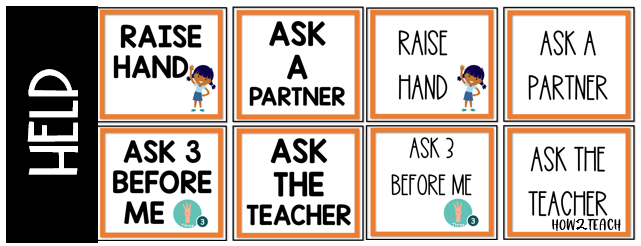CHAMPS Classroom Management: How to Set Expectations for Your Students
- Karen Kauo

- Jul 22, 2024
- 3 min read
Updated: Jul 29, 2024
Classroom Management is one of the most challenging aspects of being a teacher.
The most effective teachers are masters of classroom management. They are clear with their expectations and hold students accountable for those expectations. ALL. THE. TIME. Accountability and follow through are critical.
The goal of quality classroom management is to ensure that students know what your expectations are so that you DON’T need to manage behaviors with interventions and consequences (for the majority, let’s be realistic).
If you are looking for a new strategy of communicating expectations and even if you’re not, give CHAMPS a try!

CHAMPS is part of Randy Sprick’s Safe and Civil Schools. CHAMPS is not a set of rules and consequences for your students. It is a classroom management system that communicates to students what your expectations are during classroom work time.
The CHAMPS system focuses on six areas. In each of these areas, expectations are communicated before work even begins. The goal of this communication is to:
Limit interruptions – students already know where things go
Set expectations for things like voice level and movement around the classroom
Give students a heads up as to transition cues for the end of an activity
Stop behavior issues before they start
The CHAMPS acronym that stands for CONVERSATION, HELP, ACTIVITY, MOVEMENT, PARTICIPATION, AND SUCCESS (SUPPLIES).
C - Conversation - The expectation for voice level
At the beginning of the year, have students practice the expectations for different voice levels. Students learn what an appropriate whisper voice sounds like compared to a presentation voice.
Options for voice level are: Silent, Whisper, Inside Voice, Presentation Voice, Partner Talk, Group Talk, Outside Voice
You can also use the Voice Levels of 0, 1, 2, 3.

H - Help - What should a student do if they need help?
Students are told what they should do if they have a question about their current activity. Should they ask you? Ask a friend? Or maybe just figure out the problem on their own?
Communicating this expectation leads to fewer interruptions, especially when you are trying to work with small groups!
Options are: Raise Hand, Ask an Elbow Partner, Ask Three Before Me, Ask the Teacher, No Help Work Independently

A - Activity - Details about the activity that will be completed
Activity refers to how students will complete work and what the final product is expected to be. The Activity option can also include the learning target and success criteria for the lesson. The procedures for completing work and the expectations for the effort required should be reviewed as part of teaching instructional procedures.
Options could be: Independent Work, Partner Work, Group Work, Whole group, Teacher Directed, Math Worksheet with Manipulatives, Reading Response in Journal.

M - Movement - What student movement is allowed?
Setting clear expectations for movement allows students to know if they can get out of their seats during the lesson or activity.
Make sure to model each action to set clear expectations and have students practice, so there are no misunderstandings about each movement and if they must be silent or can make noise.
Options could be: Remain in Seat, Remain in One Spot, Move to Get Materials, Move with Permission, Move Freely.

P - Participation - What behaviors demonstrate learning?
Participation refers to students’ level of engagement and involvement in a lesson. The teacher should provide opportunities for all students to participate in activities and discussions. That participation will look different for each activity.
Should students be taking notes? Should they be discussing the content with an elbow partner? Students need to know the level of participation that is expected of them.
**Another “P” option is Post-Activity. Post-Activity communicates to students what they should do when they have completed their work. This avoids the, “I’m done, now what?” question.
Options are: Actively Listening, Turn and Talk, Quietly Reading, Friendly Partners, Following Directions, Everyone Share, Center Work.

S - Supplies - What supplies are needed for the activity?
OR end with SUCCESS when students adhere to your expectations!
Let students know what supplies should be out for an activity. This also lets students know what SHOULD NOT be out.
You can also use the “S” to indicate SUCCESS if all other expectations are met.

CHAMPS: How to Set Expectations for Your Students
You can handwrite the requirements for each learning activity on a whiteboard or use premade cards like the ones included in my FREE DOWNLOAD.
The CHAMPS system works because the expectations are up for all students to see. The visual is a reminder to students of their expected behavior during critical learning time. If a student is not adhering to the posted expectations, simply point at them as a redirect. When students know what is expected of them during ALL activities, behaviors will improve and more work will get done!













Comments